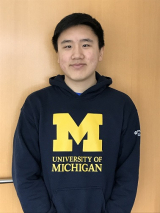Quantitative Evaluation of CAR-T Cell Inhibition Mediated by PD1

Background
Our overall laboratory goal is to develop cell-based immunotherapy to treat acute myeloid leukemia (AML). We currently are studying the immunosuppressive signals directed against effector cells and originating from AML blasts. When challenged by activated T cells, myeloid blasts upregulate the surface protein, PD-L1. PD-L1 binds to the receptor PD-1 expressed on activated immune cells. This binding causes decreased responsiveness of the T cells to the AML target. Though engineered T cells have been used successfully in the treatment of lymphoblastic leukemia and lymphomas, this type of therapy has not been as successful when developed for AML or solid tumors. Our hypothesis is that blocking the immunosuppressive PD-1/PD-L1 checkpoint will improve the anti-tumor activity of engineered T cells. While studying this phenomenon, we discovered that the resultant T cell suppression dependent on PD-1 binding was variable. The type of engineered receptor expressed by the T cell ultimately determined the degree of effector cell suppression.
Project Goal
We plan to further validate this finding, with careful quantitative study of the degree of variability engendered by our AML-specific T cell activating receptors. We have thus far produced a panel of artificial T cell receptors with different activating and co-stimulatory domains. We plan to produce a T cell reporter including a response element that is quantifiable such that the degree of activation can be measured reproducibly. We have obtained the reporter construct, including an element responsive to the NFAT family of transcription factors. We plan to subclone this into a lentiviral backbone with a fluorescent protein downstream of an additional promoter. We have also designed a second viral construct encoding for PD-1. Using these, we will stably modify the common T cell line, Jurkat. We will produce Jurkat.NFAT reporter, Jurkat.PD1 and Jurkat.NFAT reporter.PD1. We will then further engineer these cells to express our AML-specific T cell chimeric receptors and confirm differential suppression of activation following co-culture with PD-L1-positive target cells. Finally, we will use our system to test the impact of adding blocking antibodies of the PD-1/PD-L1 checkpoint to T cell activity.
Mentored by Dr. Challice Bonifant
University of Michigan, Ann Arbor, MI

